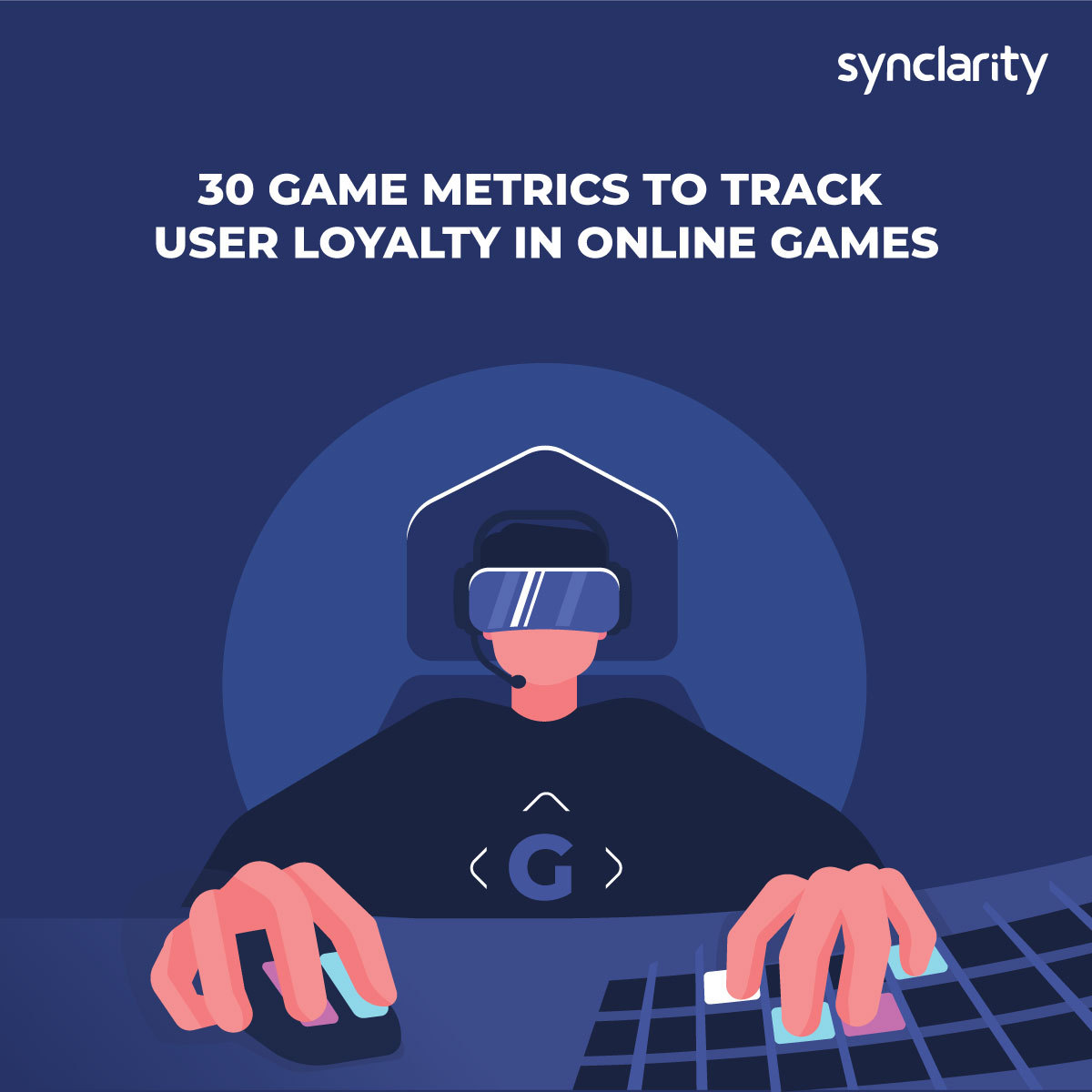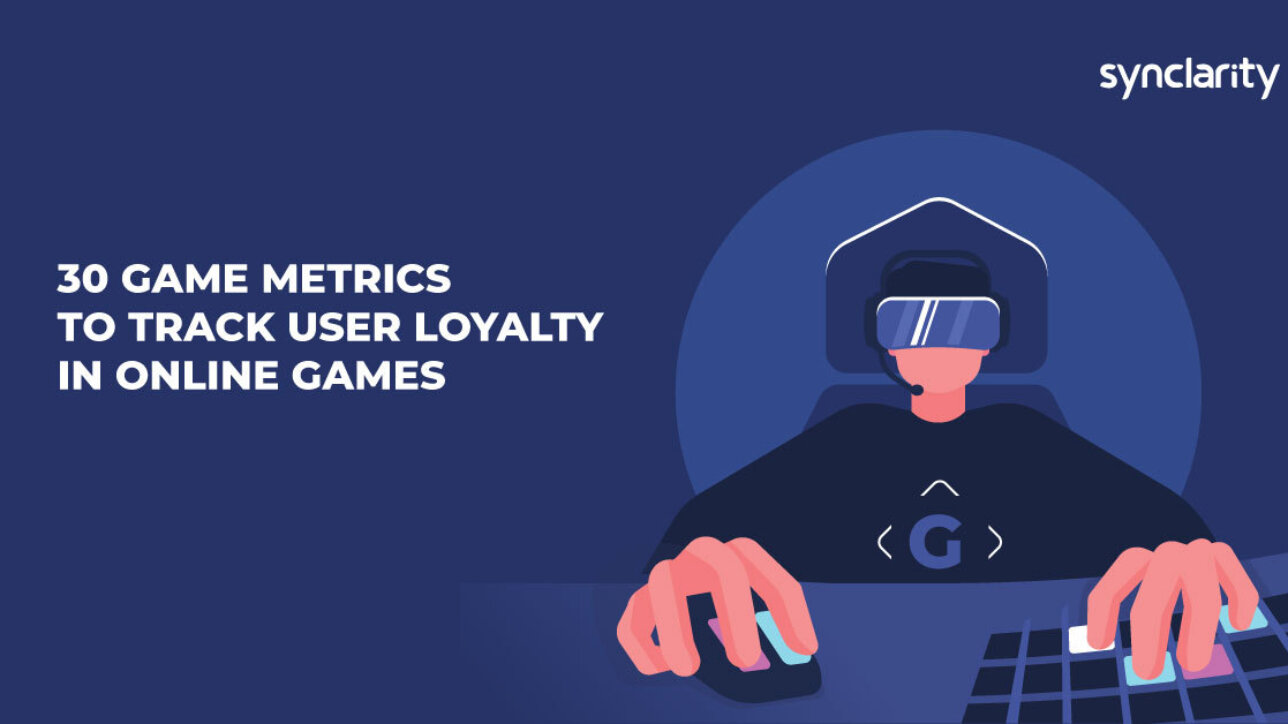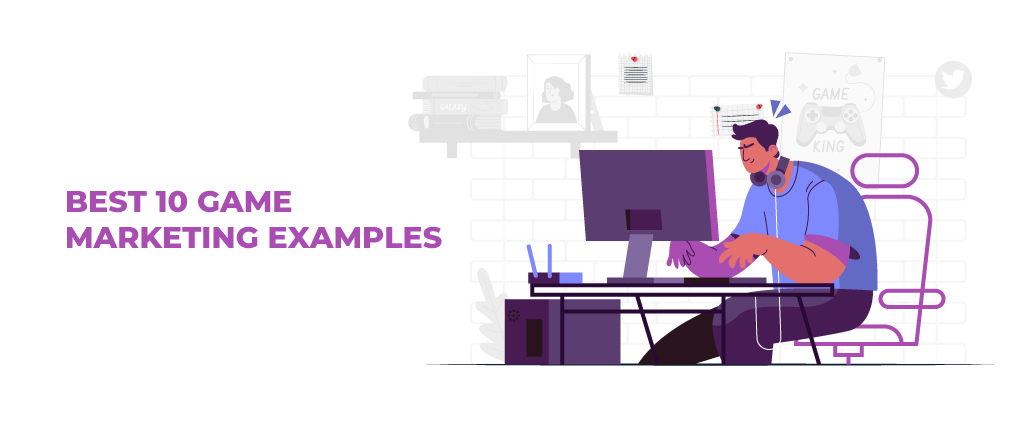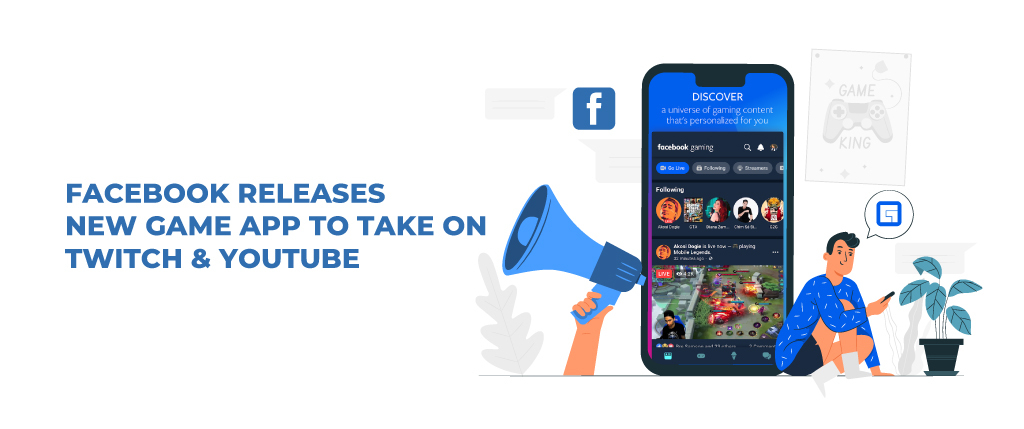You’ve spent countless hours to plan the game’s ins and outs, nailing it down from the stages to the characters. So what’s next?
How will you ensure that your investment pays off in terms of recognition and player engagement?
There’s no doubt that expectations for online games have risen significantly over the last few years.
Knowing how well your game meets player expectations and making customer retention strategies is important for your game’s success.
It clearly separates first-time developers from game companies that achieve success nearly every time they launch.
When things don’t work out on the first attempt; you’ll know what doesn’t work and then start to improve your results.

3 Key Types of Game Metrics You Have to Track
- Key User Acquisition Metrics
- Key User Retention Metrics
- Key Monetization Metric
Each of the game metrics mentioned below is classified according to the three main performance categories.
Let’s work through them one by one, and see which metric will help you maximize growth.
-
New users
It is a great habit to keep an eye on your active users. DAU calculates the number of unique players active in at least one game session.
DAU = Number of users who opened your app in a day
While this metric doesn’t describe the success of your game, it’s a great way to understand how the app has become a part of the everyday life of your users.
DAU is relevant specifically for games that are searching for a way to go viral. Keeping track of DAU means always keeping your eye on the pulse of your user base.
It will let you know what customer loyalty programs will or will not function so that you can make changes to your game metrics.
-
Monthly Active Users (MAU)
MAU identifies specific users who have used the app at least once in the last month.
MAU = Number of users who opened your app in a month
A user only has to sign in to register to be counted under MAU; he doesn’t necessarily need to get engaged with the product.
This being said, having a high MAU does not mean you would have a high degree of user engagement.
-
K-factor
If the project is viral enough, users are able to share it with their friends, other people are invited by their friends and so forth. A viral project can dominate the market.
The indicator used to calculate the virality is called K-factor.
It keeps track of the customer referral strategy. The k-factor of your game is the number of invitations sent by each customer of your application, multiplied by the conversion of each invite.
K-factor = (organic downloads for the period n+1) / (active users for the period n)
The period in this formula can be a week, month, year or any other time that you define.
-
Retention Rate
The first metric to look at when evaluating your retention plan is your retention rate.
To measure your game’s retention rate, split your users into smart cohorts based on the day of acquisition.
Retention Rate = Number of users who use your app in a set period / Number of users who used your app in a previous time period
Understanding how your retention rate connects with certain aspects of your strategy can shed light on what makes your users operate.
-
Cohort Retention
Now that you know how to measure your game’s overall retention rate, level it up with cohort analysis of your retention profiles.
Many game developers begin analysis of cohort retention by download date.
When a software update results in an increase in the retention rate for the cohort of that month, you know that you are making progress.
There are so many ways you can segment your players such as interests, age or location. If you track population retention trends, you get more insights into who is making up your core market and who isn’t.
Identify the audience’s preferences and demographics and then start developing a more effective and personalized plan to obtain, engage and re-engage those players.
-
Engagement Score
The user engagement score is a common metric used to determine how engaged your players are when playing your game.
It’s measured by a number based on user behavior and the number of day-to-day user sessions.
The easiest way to determine how to turn your unengaged user into engaged and well-paying users is to classify and analyze user activity using the engagement score as a distinctive feature of your cohort.
-
Session Length
It is almost harder to think about engagement and not talk about the duration of the session.
In reality, one of the key differences between apps you just can’t put down and apps that end up in the graveyard is the session length.
It helps you to know how long a player has actually been communicating with your game after initialization.
Keep in mind the level of interactivity depends on your application. For game makers, the session length is direct screen time, or how long the player has spent viewing the screen of the device.
-
Session Interval
When tracking the session length, also keep tabs on the session intervals.
This measure indicates how much time there is between the first session and the subsequent session.
High app-open-frequency also equates to high interest, which means players like your game.
You’ll know when to display in-app messaging or push alerts to attract certain players back to your game for another match by having data about the average time interval between sessions.
-
Number of Sessions Per User
It is important to calculate the number of sessions a person completes in a particular period.
If you know how often your users sign into or use your app on a regular basis, it can be easy to calculate the effect of interaction tools in place and modify your strategy accordingly to make sure that these players keep coming back for more.
-
Time in App
Time in App is identical to the session length, but the distinction lies in how long a user has used the app for a given period of time, i.e. 12 hours, 24 hours etc.
It provides you with insight into user behavior and how important your game is to players.
If you have a specific group of players who spend long periods in your app, it’s important to try and monetize them more efficiently, refine their experience, and leverage your game elements that encourage them to stick around.
-
App Load Time
App load time depends on the app’s features which affect the user experience. With each passing day, user expectations for device load times seem to increase.
A quick look at reviews on the App Store or Google Play will tell you that low ratings and less than stellar feedback are generally attributed to slow load times (and launch time, by the same token)
-
Stickiness Rate
You’ll be able to see the stickiness rate by dividing Daily Active Users over Monthly Active Users.
Stickiness Rate = Daily Active Users/Monthly Active Users
This provides you with an insight into a very important issue: how many monthly users are regular users?
An efficient way to calculate your stickiness rate is also by combining the Power users with Loyal users.
-
Conversion Rate
How many of the people who download your game will become paying players? You’ll know who’s really making purchases by measuring the conversion rate.
Conversion Rate = Total number of users during time period / number of users who have made a purchase
While most of your players probably keep their wallets tight, those players who do spend money can be some of your greatest allies because they are really interested in your game.
-
Churn Rate
The churn rate is the exact opposite of the retention rate. You keep track of lost users or the ones who uninstalled the app.
If your game isn’t filled with bugs and you still lose users – the problem lies elsewhere.
The game may be too complicated for users to understand, or the game simply lacks the ‘something’ to make it interesting for the players.
-
Achievement
Achievement is the reward given to a player for completing a given action in the game.
When the achievements are distributed in the right proportion across levels, they bring joy to the players and allow analysts to calculate how many users have achieved a certain level.
-
Stars
You can also calculate stars, virtual currency and any other measures of the quantity obtained upon completion of one level.
Such metrics alone are not sufficient to draw accurate conclusions, but when used in combination with the level’s churn rate, they help you to better understand why users like or dislike a particular part of the game experience.
-
Source, sink, and flow metrics
These three metrics make sense only if you have an in-built currency system in your game.
The source metric indicates how much currency a user won as they progress through the game.
The sink metric shows the levels a user needs to invest the currency in order to push forward or compete with other players.
Finally, the flow metric is a calculation of both the sources and the sinks: it is the overall currency balance a player has gained and expanded over time. This metric helps you to see how to nudge a player towards conversions or transactions in-app.
When you know how your players invest their in-game money, you’ll be able to understand player interaction and the thought process of people playing your game.
-
Net Promoter Score (NPS)
It is the index of user loyalty. First, you ask users to evaluate the probability that they share information about the project with their friends, from 0 to 10.
The second step is to calculate the share of promoters who are very happy with your project and who brought you 9 or 10.
Next, you calculate the share of detractors from whom you received negative evaluations, 6 and less.
Then at last, by subtracting the share of detractors from the share of promoters you get Net Promoter Score.
-
Average Revenue Per User (ARPU)
ARPU (average revenue per user) is the main monetisation metric showing user loyalty.
This metric is also used in discussions between developers during conferences to compare the performance of applications. No doubt, your partners or investors will ask you about this metric.
-
Average Revenue Per Daily Active User (ARPDAU)
ARPU is typically measured for one month (your monthly revenue divided by MAU), but some other time frame can also be taken.
Let’s say, ARPU for one day is called ARPDAU (calculated as a divided daily revenue by DAU). This metric has high seasonality and relies on the day of the week.
-
Average Revenue Per Paying User (ARPPU)
The Average Revenue Per Paying User is another measure of user loyalty. It is calculated as revenue divided by the number of users paying.
ARPPU is the predictor of paying loyalty of your customers, their reaction to the prices in your project and their interest.
-
Customer Lifetime Value (LTV)
The lifetime value of the user refers to the amount of net income that you produce from a customer before churning from the app.
Similar to the acquisition metrics and retention metrics described above, this measure is your strategy’s “pulse “, if it’s up, that means your strategies work!
LTV is the measure for both retention and ARPU counts. There are several ways to measure LTV: the most common means the retention integral is taken and multiplied by ARPDAU.
So, LTV is an excellent metric that demonstrates users’ commitment, but you need some time to work with it.
-
Average Transaction Value (ATV)
It calculates the average price a user is willing to pay for an upgrade or currency in the game.
If you calculate average transaction value from the point of acquisition of a customer over a weekly or biweekly period, you can easily make changes to your pricing model and measure the impact on LTV, retention and acquisition.
.
-
User Acquisition Cost (UAC)
User acquisition is the amount of marketing acquisition costs you pay to obtain a single consumer.
This statistic is determined by dividing all expenses incurred in acquiring customers by the amount of customers you actually received during this period.
-
Time to Purchase (TTP)
Let’s presume you’ve launched your app and the users start to engage. How much time has passed between the download and the first purchase?
What is the value of that purchase? This metric will boost your in-game ad placement and the things that you sell.
Turning the users into buyers is achieved by defining the targets for conversion.
-
Cost Per Install (CPI)
Cost Per Install or CPI is mainly linked to campaigns that publishers place to obtain downloads through digital advertising. Advertisers are paid only if the users install the app via the ad they clicked on.
CPI = Ad Spend / Number of Installs
-
Paying Share
This is calculated by dividing the number of users paying for the time by the total population for the time.
The paying share is a useful metric which demonstrates user loyalty to your product.
-
First Payment Conversion
First Payment Conversion is the share of users who have registered in the project at a given time and made at least one payment till present.
You need to calculate how quickly purchases are made by users (it is especially important for the first payment).
You can build ads at the right time when you know this data to draw the interest of users and improve the chances of payments.
-
Repeated Payment Conversion
Repeated Payment Conversion is the number of users who have registered in the project at a given time and made more than one payment at present.
Researchers show that the probability of second payment is higher than first, and that the probability of third payment is higher than second payment. Repeated payments also make up the majority of sales.
The Right Way to Measure Success
When you want to ensure you get the most out of your metrics, you need to unify the data from your sources of acquisition, retention and monetization.
By integrating your acquisition and retention data, you will gain powerful insights into which markets have the most reliable and happy customers.
A data warehouse could help unify and compare the data from your social media, advertising, app store, and more to get a clearer picture of your success strategy.
Hope you find these metrics useful, and start using them to increase your users’ loyalty.




